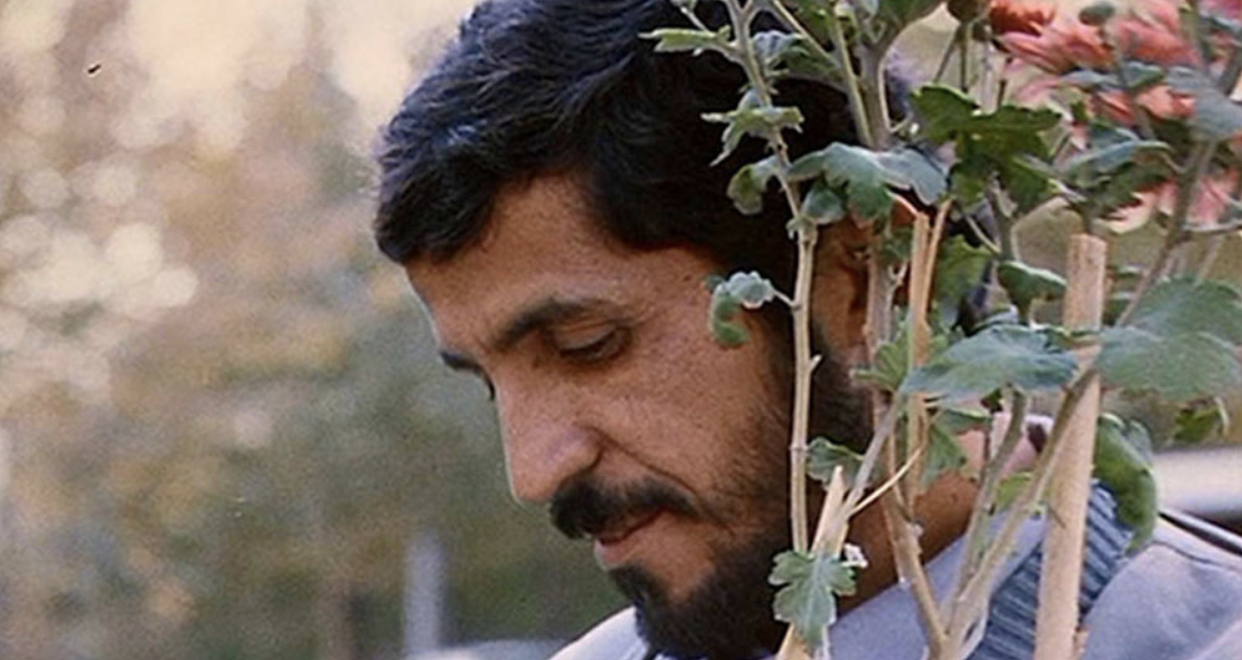Written by: Patrick Novak, Staff Writer
CINEMA: An analysis of Abbas Kiarostami’s 1990 documentary Close-Up.
Everyone has someone they aspire to be like someday, such as a family member, friend, or celebrity. But how far should one go to emulate their idol? Should they go as far as to pretend that they are them? Abbas Kiarostami’s 1990 documentary “Close-Up” reveals this exact situation. During the late 1980s in Tehran, Iran, a man named Hossain Sabzian tricked his family into believing he was the famous Iranian director Mohsen Makhmalbaf.
The movie is a hybrid between fact and fiction, with some parts of the movie being real footage and others reenactments of the true events, incorporating the same people that it originally involved. The film blends fiction with reality by reflecting how Hossain Sabzian was disillusioned with his own life and subsequently turned his fantasies of becoming a successful filmmaker into reality through the internal falsification of fame. As soon as he heard about Hossain Sabzian’s story, Abbas Kiarostami stopped the production of a movie he was working on, so he could document the rest of the story that was yet to unfold.
Art can create extremely strong bonds between people. It is incredibly common to become so attached to an artist you look up to that you consider the artist and their work as a part of who you are. How different is the consumer from the artist if they both relate to one another on such a deep level? Is Hossain Sabzian really that different from Mohsen Makhmalbaf? They had both been through the same struggles and have suffered in the same ways.
The film opens with journalist Hossain Farazmand explaining the story of Hossain Sabzian to a taxi driver, who is escorting him and two other men to arrest Sabzian for allegations of impersonating Mohsen Makhmalbaf. Unprepared, Farazmand forgot to bring a portable tape recorder for his interview with him and even money to pay the taxi fare. This is the first instance of a common theme throughout the movie, unpredictability and improvisation within art and life. The other instance was Sabzian’s life story: his life was filled with regret and fear of failure, which prevented him from pursuing the arts which is what made him most happy. Even the movie itself is improvisational in nature; Kiarostami did not know what twists and turns would occur during these events.
Much of the movie takes place in the courtroom of Sabzian’s trial. Hossain Sabzian’s trial was shot with two cameras, with one being a close-up lens that stays on Sabzian’s face and the other a wide angle lens that films the entire courtroom. The camera with the close-up lens is the one that’s utilized the most, showing nothing more than Sabzian’s face. As the film consistently focuses on Sabzian’s testimony, the viewer’s full attention is directed towards what he has to say, giving an unfiltered and authentic look into his life and personality. The film gets more complex as it progresses, shifting from a documentary about a simple crime to a dissection of the suffering of one man’s life and an exploration of the tragedy involved in everyday life, as well as how those tragedies affect someone’s art and its importance.
Writing this review has made me more confident in my belief that Close-Up is one of the most creative pieces of art ever created and that few other movies blend reality and fiction in such a seamless manner. I was incredibly touched by Hossain Sabzian’s story and related to the isolation he felt, as well as his inability to properly communicate emotions to other people and through his own art. In particular, the final frame,where Hossain Sabzian looks to the ground while a bundle of pink flowers hits his face, will always live with me as a reminder that it’s never too late to change for the better.
Today Close-Up is widely regarded as one of the most important pieces of Iranian cinema ever made, despite its initially lukewarm reception. The British film magazine Sight & Sound featured Close-Up as number 42 on their Top 100 Greatest Films of All Time list. The Criterion Collection also released a high definition remaster of the film which exposed the movie to a lot more people. Many notable artists have been influenced by this film such as Michael Cera and Martin Scorsese. Hossain Sabzian passed away in 2006 from a heart attack while riding on the Tehran metro at the age of 52. Abbas Kiarostami died from a battle with gastrointestinal cancer in 2016 at the age of 76. Even though Abbas Kiarostami and Hossain Sabzian are no longer with us, Close-Up’s legacy will forever be seen in the medium of film across the globe. Close-Up is not for everyone due to its unorthodox nature, especially in comparison to Kiarostami’s more conventional movies such as Taste of Cherry and Certified Copy. However, it is definitely worth a watch if you want to see something unlike anything you have ever seen before.

